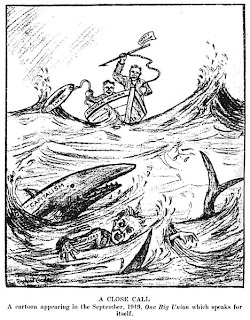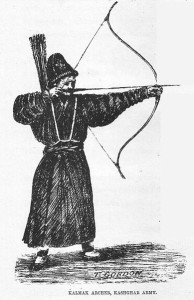| The God That Crawls LotFP module |
The short review: based on a read-through, this is one of my favorite Lamentations adventure efforts, probably right below Tower of the Stargazer (my favorite) and Death Frost Doom (my second favorite). I was hoping for a “weird” take on a more traditional fantasy dungeon adventure (with factions and tent pole potential), and that is definitely not what this module is. However, it is a very ambitious attempt at tacking something else that I am very interested in: making exploration time (as a cost) the centerpiece of a scenario. The layout and physical appearance is among the best that LotFP has produced to date. I love the slight fade to gray around the edges, which makes every page almost seem to glow. The standard LotFP digest size also makes the PDF convenient to read on a tablet. The art is, however, not up to the standards of releases like Carcosa or The Monolith From Beyond Space and Time (though it is by no means bad). For the long review, with spoilers, continue beyond the period tower.
.
.
.
.
.
.
.
.
.
.
.
.
.
.
.
.
.
.
.
.
The setting and atmosphere are historical, but in a way that should be easy to incorporate into many fantasy settings. A saint has been corrupted in the past and transformed into a terrible monster. However, the village populace still believes that the creature is somehow holy and seeks to protect it and hide it from outsiders. It’s also part of a higher-up church conspiracy (or at least some church superiors know about the cult and seek to keep it secret if for no other reason than to protect the reputation of the church).
I really like the main adventure hook. Though it likely traps the PCs in a bad situation, it is entirely opt-in. That is, players are going to be drawn in by their own curiosity (rather than railroaded into the adventure), and there are many possible approaches. Minimal investigation could easily reveal warning signs that all is not right, but I suspect most players will not question the hook. This could be an issue in a campaign where players do not decide which leads to take, but it should be fine for either a one-shot or an extended sandbox game. This also means that if players are smart and come at the adventure from an odd angle, or wait until they are powerful enough to challenge the god directly, they should not be penalized.
Also, questioning adventure hooks is a matter of player skill, in my mind — players should always worry about being used as tools by NPCs for unwholesome ends. It is also possible, through skillful dungeon play, to come out ahead in the end, though I would consider the scenario as a whole to be difficult and potentially punishing. There’s nothing wrong with that for players that are up for a challenge though.
The map itself looks like it might be one of the few labyrinth style dungeons (maze of twisty little passages) that I think might be fun to play through literally and diegetically, mostly because there are so many interesting (if a bit arbitrary, sometimes) tricks scattered around for players to interact with. There is enough variance to keep the areas from feeling too similar (and much of that variance is not merely cosmetic; it also contains real clues). The decision to use one powerful monster as the tool of time pressure rather than an arbitrary number of wandering monsters is interesting and thematically sound (horror stories are much more likely to have one horrible creature stalking the protagonists and getting closer and closer, rather than patrols of orcs or whatever). The time spent reaping the potential module rewards (which are real) directly increases the chances of encountering the god — which is old school dungeoneering reduced to its essence.
LotFP modules are sometimes criticized for only having “screw you” magic items. There are certainly a few problematic items in TGTC, but there is also plenty of treasure that has no strings attached (as described above, explicit risk versus reward is the major design principle of the dungeon). Further, the items with drawbacks are interesting and seem like they might lead to some fun play without just punishing players for interacting with weird elements. I like the book and its new spells, though it would probably require several readings to really understand how to run it. The chariot has some silly player-dependent mechanics (including the painting of a player nose — but those are easy enough to ignore). There are also a few items that have interesting effects but perhaps lead to outcomes that are a bit to final for my taste (such as “I am the gate”) which I would either excise or tweak slightly.
One of the most valuable aspects of this module is that running it successfully seems like it would require a mastery of movement rates and encumbrance. That may sound tedious (or trivial) but stay with me here. The game part of the dungeon revolves around the trade-off between spending time (and making noise) breaking open sealed treasure caches. The time and noise made increases the probability of encountering the god, which is probably too difficult to fight, which means that PCs need to flee if they want to survive. If you can run this module successfully, you should be able to run chases and pursuit in any other dungeon context. Thus, The God That Crawls makes for great practice regarding an important referee skill that is not (in my experience) used as much as it should be.
Overall, this looks like an excellent module, both as a fully realized adventure locale and as a source of ideas to insert into other dungeons (especially the numerous tricks). I think it will require some effort to prepare and run successfully, but I bet that anyone running it will end up as a better referee for doing so.






